| | | | | | | Presented By OurCrowd | | | | Axios What's Next | | By Jennifer A. Kingson, Joann Muller, Erica Pandey and Bryan Walsh ·Aug 10, 2021 | | Greetings from Manhattan, where you've got me, Jennifer A. Kingson, the new editor of What's Next, grabbing the journalistic baton from the amazing Bryan Walsh. - He'll resume writing the Axios Future newsletter — sign up here.
"What was next" trivia: Kudos to reader Michael O'Brien for being the first to note that Wrigley Field hosted its first nighttime baseball game, on Aug. 9, 1988. (Go Cubs!) - Today, instead of a trivia quiz, an experiment: Send us a photo you've taken of something interesting or unusual that fits our newsletter's theme: the future of cities, transportation, the workplace and our lifestyles.
- Our highly selective panel of judges 🧐 will select our favorite(s) to publish tomorrow, and give you credit.
- Send your photos, along with tips and feedback, to whatsnext@axios.com.
Today's Smart Brevity™ count: 958 words ... 3.5 minutes. | | | | | | 1 big thing: Office politics move into the home | 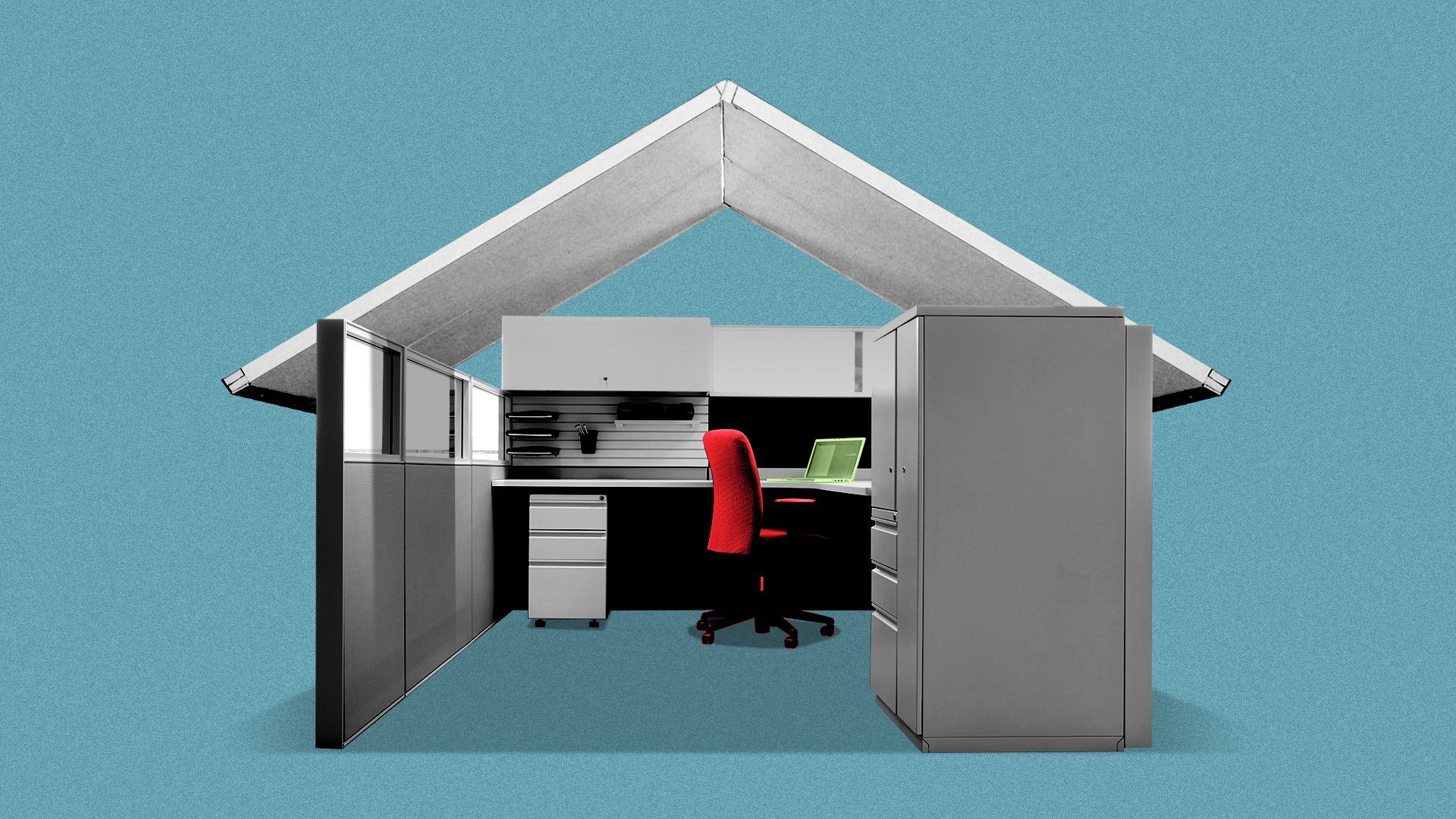 | | | Illustration: Brendan Lynch/Axios | | | | As the pandemic drags on — keeping millions of Americans teleworking, and countless students studying remotely — the tense dynamics once confined to the office have infiltrated people's houses and apartments, Erica Pandey writes. Why it matters: Families are haggling over who gets prime workspace. Should it be the biggest breadwinner? In many homes, women are the ones who get stuck with less-than-ideal offices. The big picture: The pandemic has dealt a devastating blow to working women — with nearly 2 million dropping out of the labor force, in many cases because they were disproportionately saddled with housework and child care duties. - The lack of access to office space is yet another hurdle making the pandemic harder for female workers.
"Women have become nomads," says Liz Patton, a professor of media and communication studies at UMBC and the author of "Easy Living: The Rise of the Home Office." - "There have always been spaces in the home that have been masculinized, like garages and basements and home offices," she says. "We already have ideas about who these spaces belong to, and so we default."
- Most homes only have one office and limited places for quiet work. While men have set up shop in those spaces, women are wandering between the kitchen and the living room, with their laptops on one hand.
- On top of that, women are often interrupted throughout the workday as they juggle work with other responsibilities like cooking or helping kids with homework.
What they're saying: "I threw out my neck working at the kitchen table on my laptop," says Lauren F., who works as a freelance marketing consultant. "My higher-earning male spouse took over my home office. It's also summer, still no school. Which of us is called on to blow off work and prioritize the children?" - "All to say, my work suffered," she says. She eventually decided to stop working until the pandemic situation gets better. "I feel like I disappointed my client, and as a freelancer, I didn't like risking my reputation like that."
- But there's no end in sight. School reopening plans may be foiled by the Delta variant, and Lauren's husband's return-to-work date has been pushed back indefinitely.
What's next: With remote and hybrid work becoming the norm, firms will have to put more cash behind setting up home offices for workers if they want to recruit and retain them as well as keep productivity up. Keep reading. |     | | | | | | 2. Gas-powered cars? So 2021. |  Data: IHS Markit; Chart: Will Chase/Axios Cars over the next decade are going to flip from being mostly gasoline-powered to mostly electrified, according to a new IHS Markit forecast, Joann Muller writes. Why it matters: The changeover, if it plays out as expected, represents a breathtaking and potentially risky transition for the global auto industry. - While automakers have committed more than $300 billion to electrify their fleets — and governments are adding new restrictions on gasoline vehicles — consumer acceptance remains the wild card.
Driving the news: The Environmental Protection Agency last week proposed more aggressive vehicle emissions targets through 2026, while the White House said it wanted half of all new cars and trucks sold to be electric by 2030. - With new electric models and the help of emissions credits for some companies, the industry is on track to meet the EPA's revised targets through 2026, IHS researchers said. "Beyond that, there remains work to do."
Where it stands: Electric vehicles accounted for 2.2% of U.S. light-vehicle registrations through May, according to IHS Markit data. Keep reading. |     | | | | | | 3. Car-free "Open Streets" — a pandemic thing — are drawing pushback | 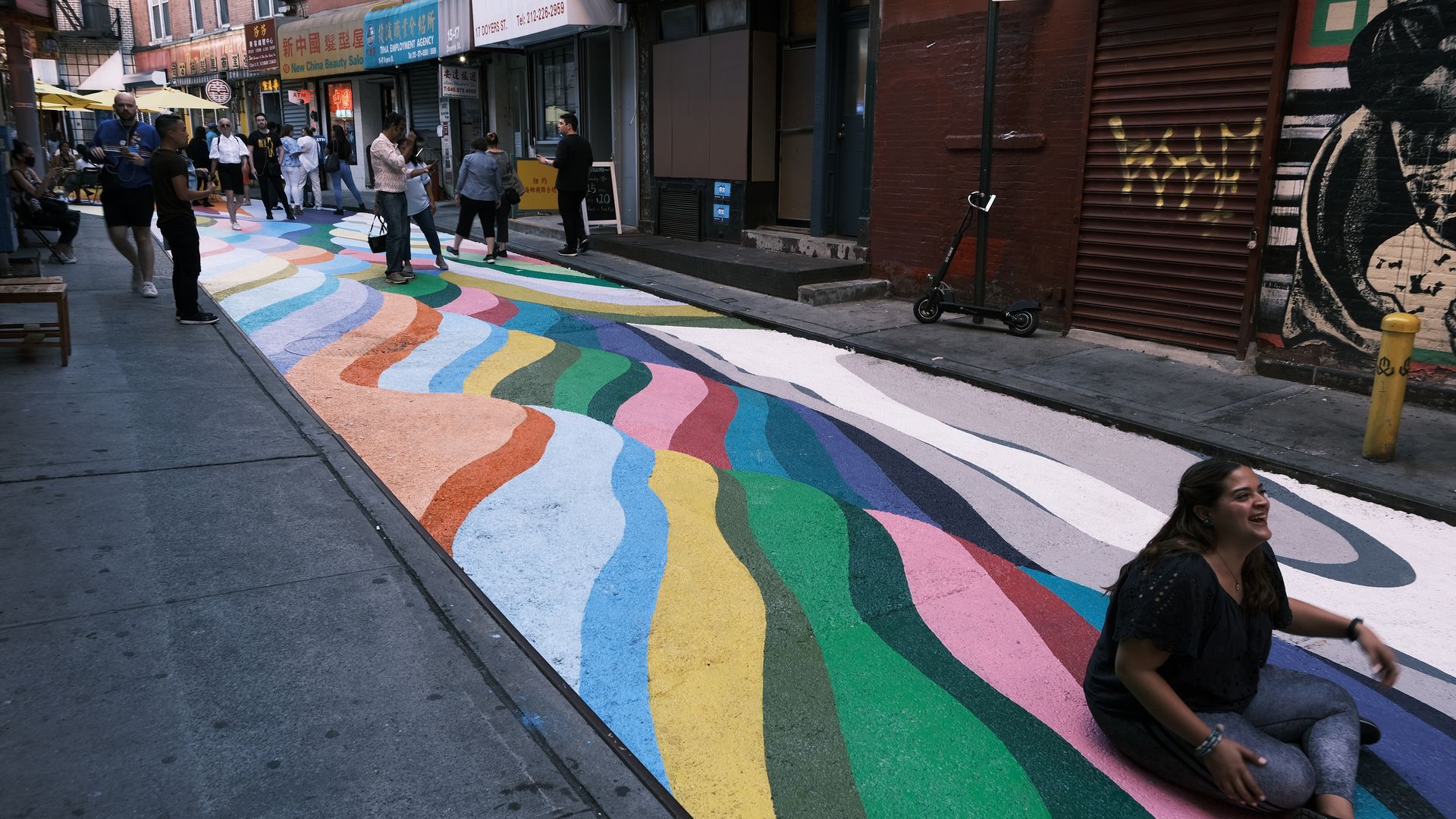 | | | Doyers Street in Chinatown is part of New York City's Open Streets program, which has ushered in public art installations and banished vehicular traffic. (Photo by Spencer Platt/Getty Images) | | | | Early in the pandemic, lots of cities started limiting or banning traffic on particular streets, aiming to encourage cyclists and pedestrians to get outside in a socially distanced way — while patronizing local restaurants and businesses, Jennifer A. Kingson writes. Yes, but: Now that cities like New York are making these measures permanent, complaints are mounting that so-called "safe streets" and "slow streets" programs are replacing old congestion problems with new ones. - In Queens, residents "complain that 34th Avenue has turned into an obstacle course — with bicycles and scooters weaving around pedestrians," the New York Times reports.
- Those residents say that the city's "Open Streets" program — broadened by Mayor Bill de Blasio into "Open Boulevards" in May — "caused gridlock on surrounding streets and made it harder to find parking and get deliveries and services in a neighborhood where many depend on cars," per the Times.
- The situation "has provoked a backlash from some residents and drivers over what they see as an experiment gone too far," the Times article said.
By the numbers: Bloomberg reported in May that "a survey of 43 member cities of the National Association of City Transportation Officials found that 22 were planning on making Covid-era traffic changes permanent, while 16 more were considering it." Share this story. |     | | | | | | A message from OurCrowd | | Beyond Meat investor opens new food-tech investment opportunity | | |  | | | | OurCrowd is creating access to pre-IPO opportunities like food-tech company Ripple Foods. The idea: Going beyond dairy, Ripple utilizes its groundbreaking technology to make plant-based milks that are great tasting, high in protein — as high as dairy milk — and much lower in sugar. Find out more. | | | | | | 4. The cost of building construction keeps going upppp ... | 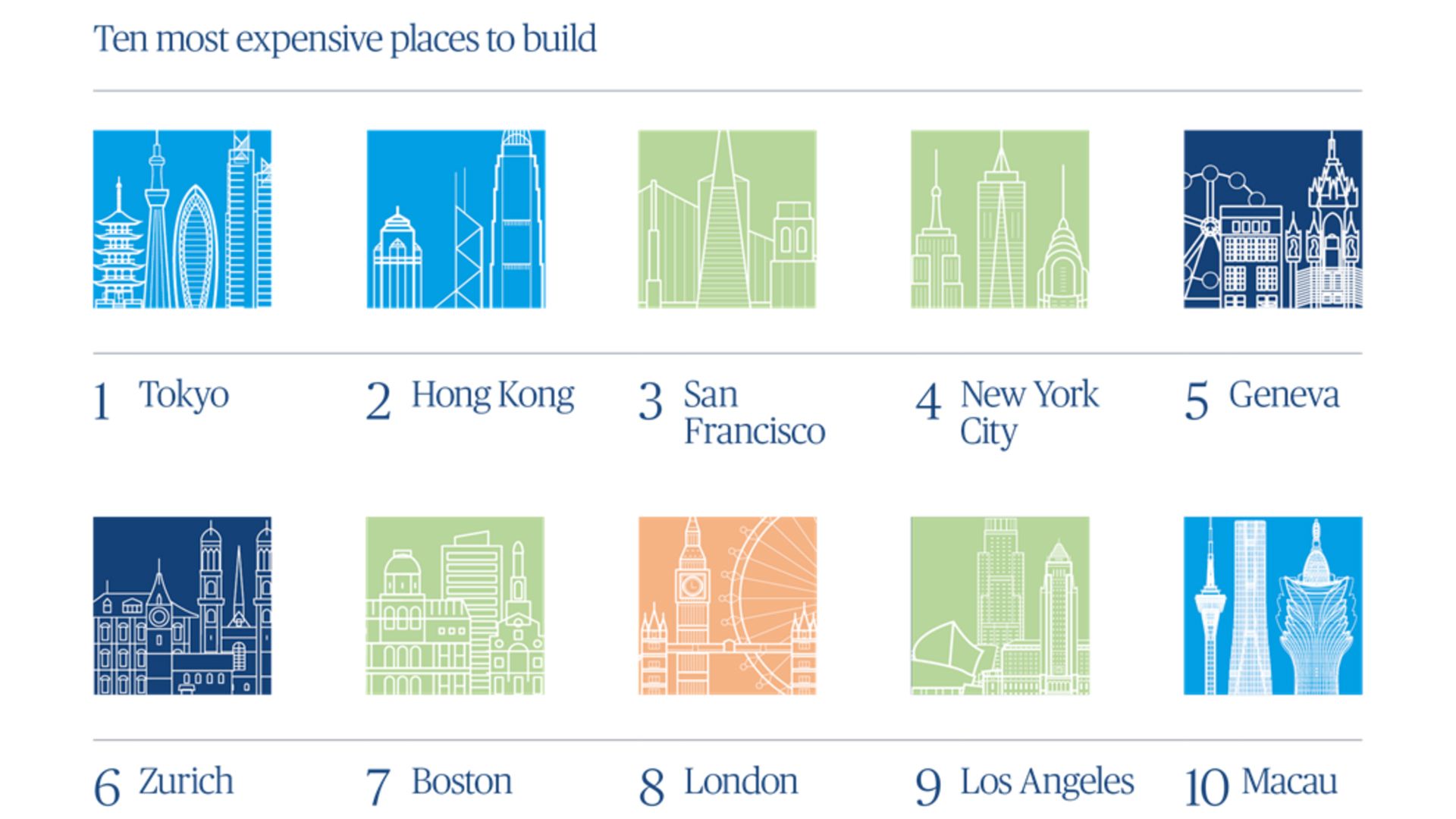 | | | Source: Turner & Townsend | | | | Thanks to the Olympics, we've seen lots of views of the Tokyo skyline — and it turns out that the Japanese capital is the most expensive city in the world to build, according to a survey by the consulting firm Turner & Townsend, Jennifer also writes. Why it matters: Building activity has picked up a lot in 2021, but labor and supply constraints are jacking up costs and prices — with no end in sight, the firm reports. |     | | | | | | 5. August, or the Delta variant? | | Back in July, I — Jennifer — was wandering around Manhattan thinking, "New York City is back, baby!" - Street vendors were doing their thang in Times Square:
The heart of the mayhem: 7th Avenue and 40th Street. Photo: Jennifer A. Kingson/Axios - Ladies were lunching at Saks:
At Saks Fifth Avenue in Midtown, there's a nice little place to eat among the rows of frocks. Photo: Jennifer A. Kingson/Axios - ... And the kids were going to the bars:
Happy hour on 1st Avenue on the Upper East Side. Photo: Jennifer A. Kingson/Axios Now? So many places in the city seem much emptier. Mask-wearing is on the upswing, and — even though the city is normally sleepy in August — this, to me, has a much different feel. Here was the scene at a municipal pool Monday — a gorgeous afternoon: The normally busy public pool at John Jay Park in Manhattan. Photo: Jennifer A. Kingson/Axios Until tomorrow! |     | | | | | | A message from OurCrowd | | OurCrowd creates pre-IPO investment opportunities for individuals | | | 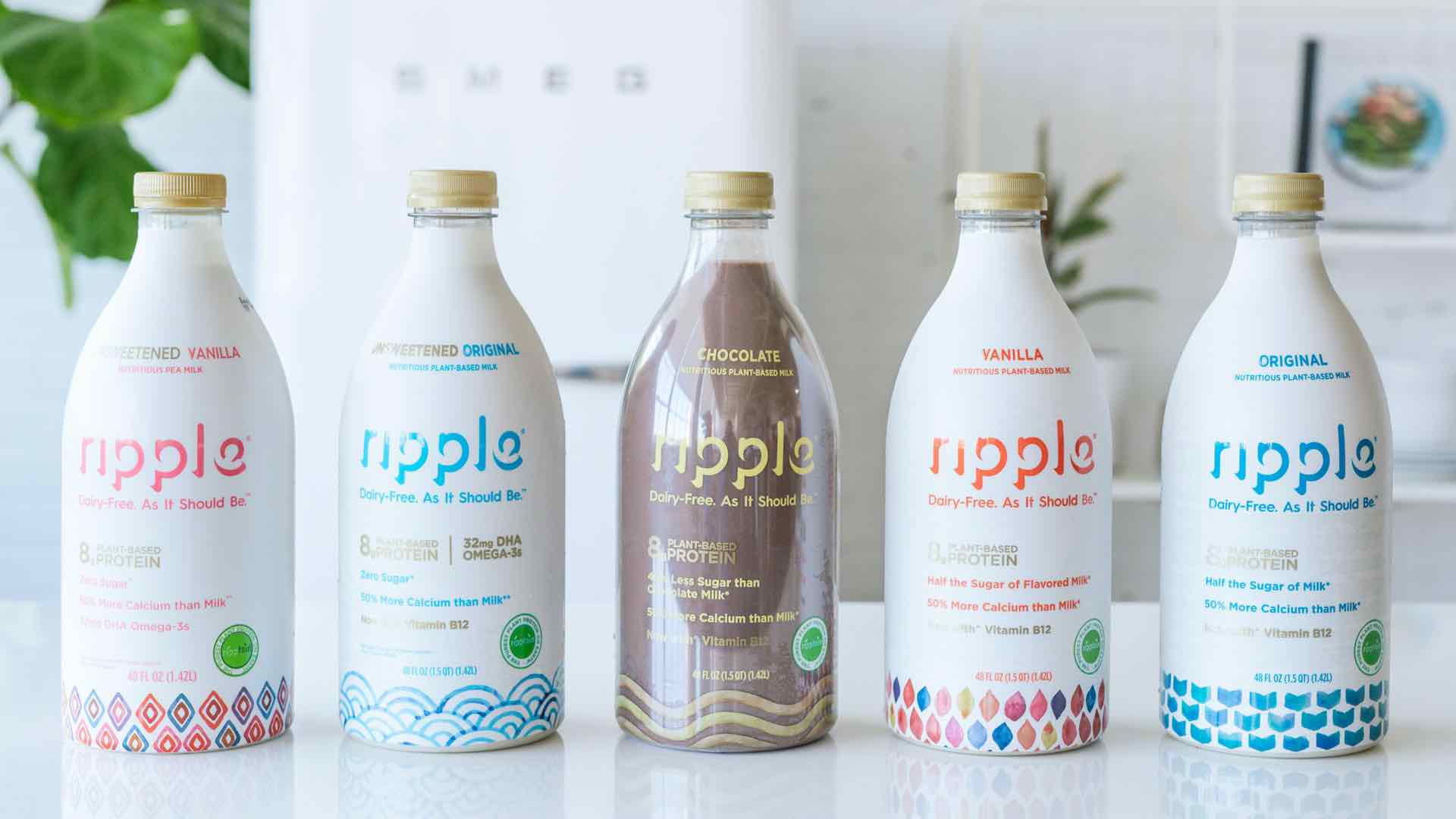 | | | | OurCrowd brings accredited investors world-changing pre-IPO opportunities – like Silicon Valley food-tech startup, Ripple Foods. The product: Ripple's great tasting, high protein, low sugar, plant-based milk products are currently being bought by customers in over 15,000 stores. Find out more. | | | | If this email was forwarded to you, please subscribe here. |  | | It'll help you deliver employee communications more effectively. | | | | | | Axios thanks our partners for supporting our newsletters. If you're interested in advertising, learn more here.
Sponsorship has no influence on editorial content. Axios, 3100 Clarendon Blvd, Suite 1300, Arlington VA 22201 | | | You received this email because you signed up for newsletters from Axios.
Change your preferences or unsubscribe here. | | | Was this email forwarded to you?
Sign up now to get Axios in your inbox. | | | | Follow Axios on social media:    | | | | | |








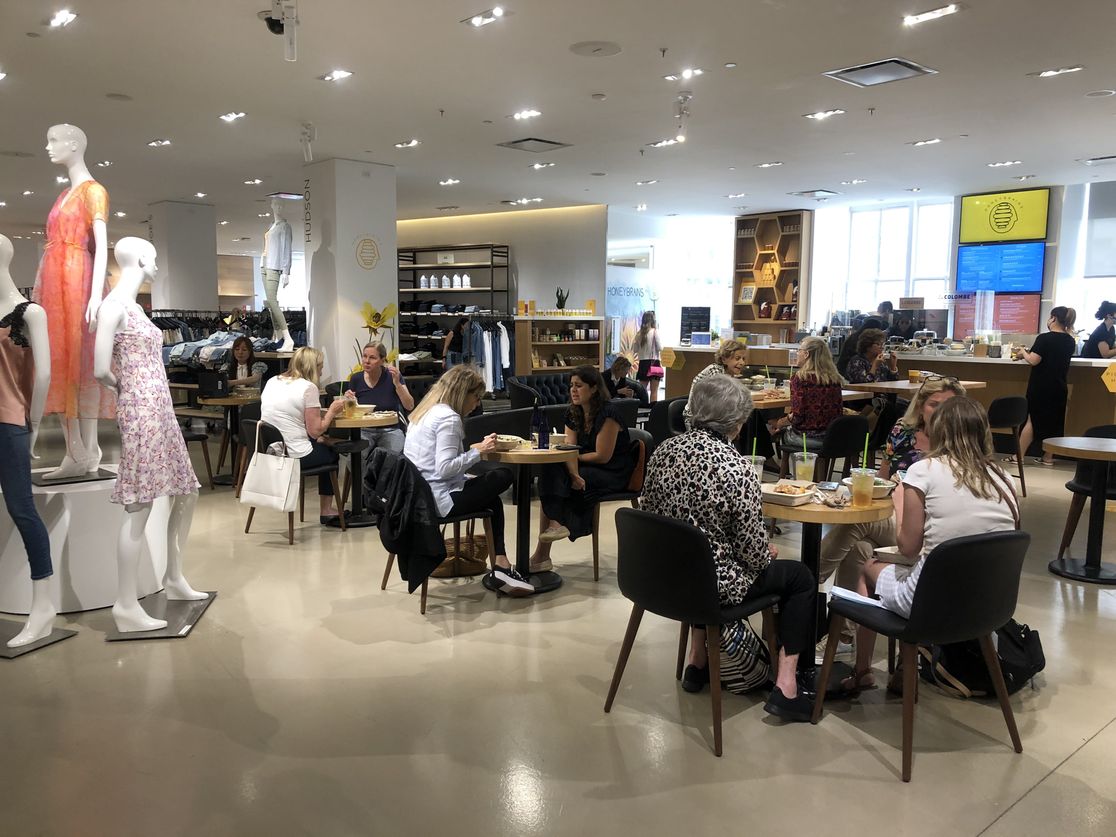

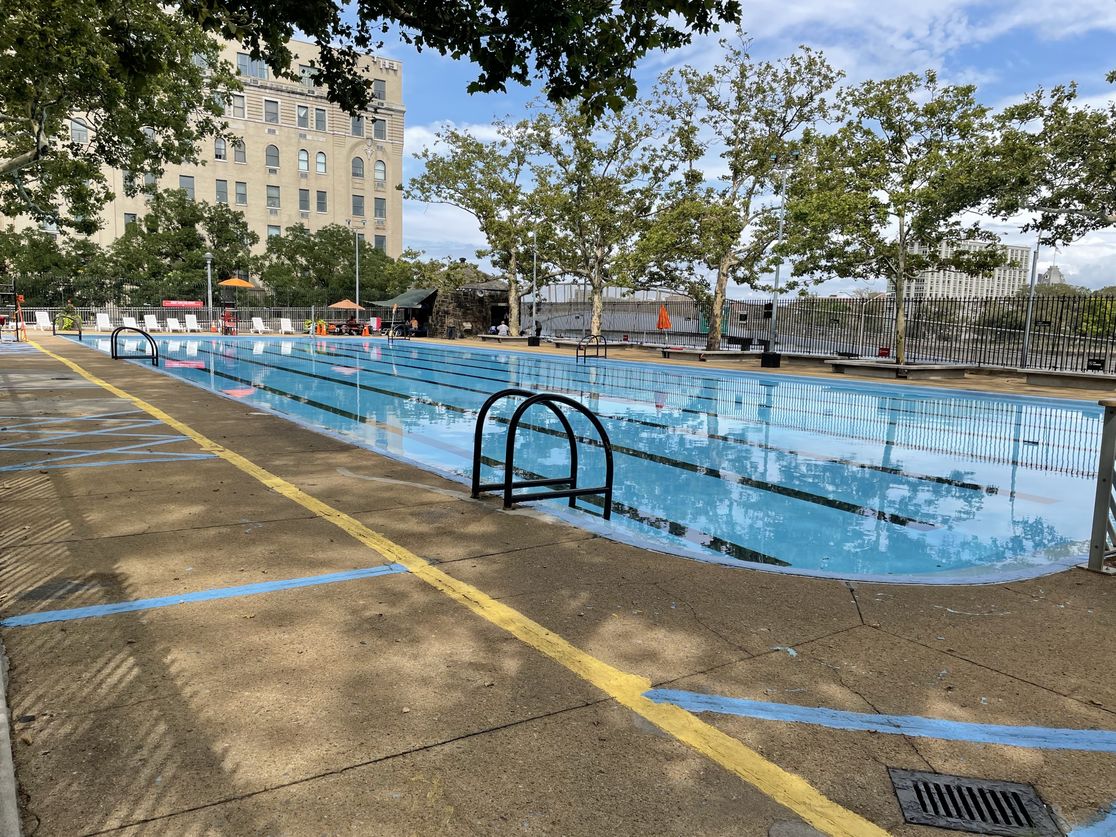

No comments:
Post a Comment